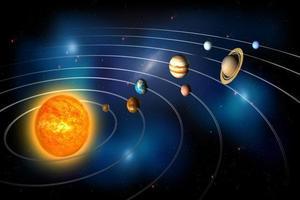13043739
UNIT 3.3 - MAKING USE OF ENERGY
Resource summary
| Question | Answer |
| Heat energy always flows from a region of ________ temperature to a region of ________ temperature. The _______________ the temperature difference then, the _______________ the rate at which heat energy will be transferred. | Heat energy always flows from a region of HIGHER temperature to a region of LOWER temperature. The GREATER the temperature difference then, the GREATER the rate at which heat energy will be transferred. |
| What is conduction? | Conduction is when thermal (heat) energy is transferred through solids from one particle to another when they vibrate. |
| What is convection? | Convection is when heat energy is transferred by the movement of a fluid. (REMEMBER - a fluid is a liquid OR a gas) |
| What is thermal radiation? | Thermal radiation is when heat energy is transferred through a vacuum (empty space). |
| What materials does conduction take place in? | Conduction occurs fastest in solids, more slowly in liquids and not at all in liquids. |
| What materials does convection take place in? | Convection takes place in fluids. (REMEMBER - a fluids is a liquid or a gas) |
| What materials does radiation take place in? | Radiation does not take place in materials. It takes place in a vaccum (empty space). |
| What is an insulator? | Insulators are materials which are poor (not good) at conducting heat energy. e.g. air, plastic paper and wood. |
| The diagram shows heat energy being lost from a house. Suggest 3 ways to reduce heat losses from a house. | - Loft insulation - Double glazing - Curtains - Cavity wall insulation - Draught excluders - Floor insulation |
| Describe how double glazing helps reduce heat energy losses. | The trapped air between the two panes acts as an insulator and reduces heat loss by conduction. |
| Calculate the payback time of cavity wall insulation that costs £1,050 to install and saves £350 per year on the energy bills for a house. | Payback time = Cost of installation ÷ Savings per year Payback time = £1,050 ÷ £350 Payback time = 3 years |
| Describe how cavity wall insulation works. | House walls are built with an inner and outer wall. The gap / cavity can be filled with foam which reduces heat energy losses by conduction and convection. |
| Calculate the percentage energy loss through the walls of the house. | Heat loss from other parts of the house = 25+10+15+15 = 65% Therefore heat loss from walls = 100 - 65 = 35% |
| When a fluid is heated the h___ fluid travels upwards. This is because the warm fluid is less dense than the c____ fluid. As the warm fluid c_____, it becomes more d____ and falls again. This cycle is called a c__________ current. | When a fluid is heated the HOT fluid travels upwards. This is because the warm fluid is less dense than the COOL fluid. As the warm fluid COOLS, it becomes more DENSE and falls again. This cycle is called a CONVECTION current. |
| A warm or hot object ________ (gives off) infrared radiation as heat waves, which can be __________ (taken in) by another object, heating it up. Thermal radiation is the only type of heat transfer that can travel through a ________ as it does not require ____________ to move, instead the heat energy is transferred by __________. | A warm or hot object EMITS (gives off) infrared radiation as heat waves, which can be ABSORBED (taken in) by another object, heating it up. Thermal radiation is the only type of heat transfer that can travel through a VACUUM as it does not require PARTICLES to move, instead the heat energy is transferred by WAVES. |
Want to create your own Flashcards for free with GoConqr? Learn more.

